Designer Tokuro Fujiwara | Composer(s) Yuki Iwai Initial release date 17 July 1992 | |
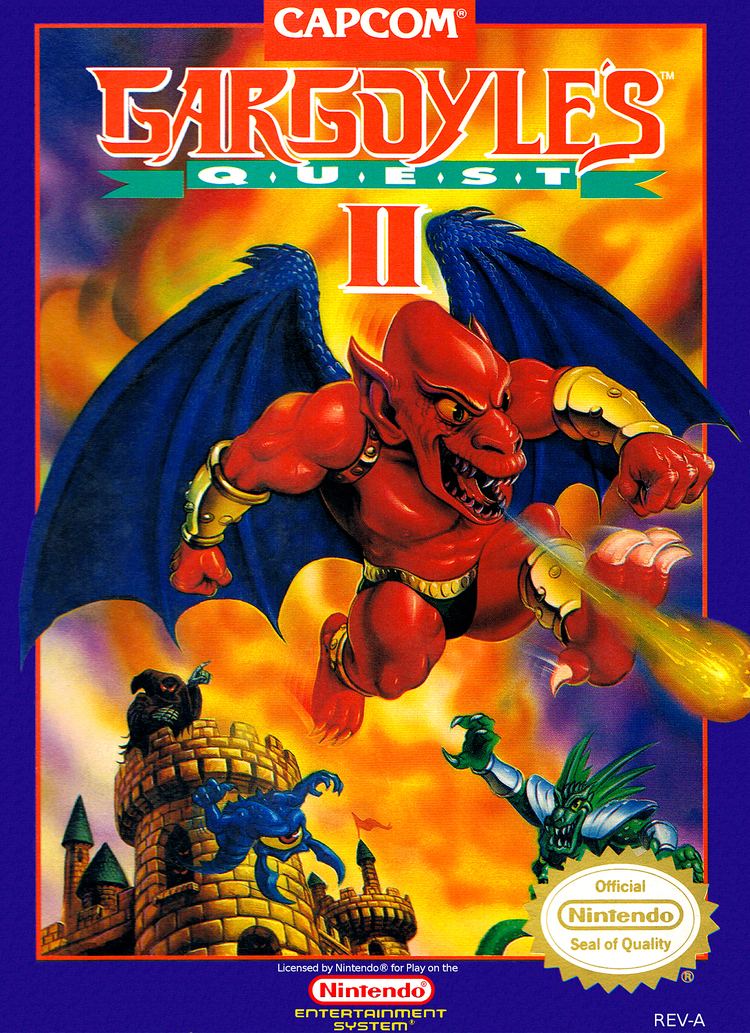 | ||
Release date(s) NESJP: July 17, 1992NA: October, 1992EU: June 17, 1993Game BoyJP: 1993 Genre(s) Action, platform, role-playing Similar Ghosts 'n Goblins games, Platform games | ||
Gargoyle s quest ii the demon darkness review for the nes
Gargoyle's Quest II: The Demon Darkness is an NES video game released by Capcom in October 1992. It is the prequel to Gargoyle's Quest (part of the Ghosts 'n Goblins franchise) and features a similar gameplay style, which combines role-playing video game elements with side-scrolling action in a macabre fantasy setting.
Contents
- Gargoyle s quest ii the demon darkness review for the nes
- Gargoyle s quest ii nes gameplay
- Gameplay
- Plot
- Re releases
- Reception
- References
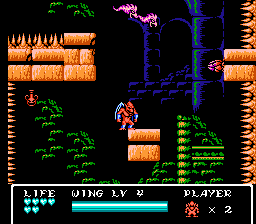
Gargoyle s quest ii nes gameplay
Gameplay
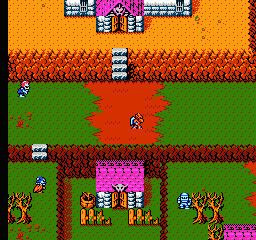
The Demon Darkness utilizes a password system and is broken into two sections: Traversing the Ghoul Realm via a JRPG overhead map view, and side-scrolling action areas, that take place in dungeons, across giant pits, and more.
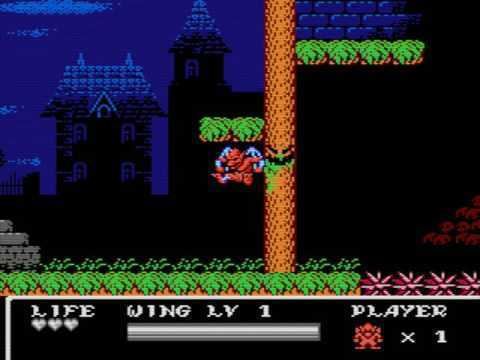
The action portions of the gameplay are nearly identical, in a broad sense, to the previous Gargoyle's Quest game. The main difference between these parts and the original Gargoyle's Quest's action platforming segments is the addition of the Magic Tornado power-up, which allows Firebrand, the playable character, to raise himself into the air in vertical directions by standing on temporary platforms. Like is the previous game, Firebrand gets around with the added help of his wings which let him glide horizontally in mid-air. Firebrand can shot "magic weapon" projectiles as a mean of attack or self-defense at any given moment. One of the staple abilities of Firebrand is his power to cling to walls for climbing up vertical cliffs, grabbing on to the sides of moving objects, and slower descending. Firebrand is notably slower than most video game characters of his kind, often leading to a necessary confrontation with each foe. Occasionally, Firebrand is blocked by foes that have significantly more health than regular ones and must defeat them in confined rooms to advance.

In the overworld and town screens, Firebrand moves faster than he did in the first game. Like with the JRPG games of this time, Firebrand moves in the four cardinal directions to navigate the realm he inhabits in semi-linear paths. Towns contain ghoul denizens, who talk to Firebrand, and various stone buildings that can be entered. Also similar to a role-playing game, Firebrand becomes more powerful as he progresses, whether by increased glide time, higher jumping ability, or more stamina, through the use of acquired enchanted items.
Plot
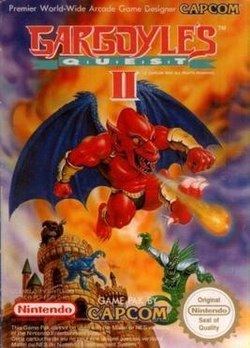
According to the video game's content, a long, long time ago before humans starting appearing in the fictional place called the Ghoul Realm, there was a fictional, young ghoul warrior, a gargoyle named Firebrand from the town of Etruria. One day, while Firebrand was out partaking in his daily routine of training in a small, alternate dimension, The Black Light appeared unexpectedly and destroyed his home. When he returns from his training, he was told to hurry to the local King by another ghoul just before it collapsed and died before him.
Firebrand then made his way there. After defeating Nagus (the Spaulder-wearing monster as seen in the distance on the European box art), Firebrand was able to meet with King Morock, who informed Firebrand that he, himself, was on the brink of death. Before dying, he gave Firebrand the Spectre's Fingernail and Firebrand set off on a journey to unravel the mystery of The Black Light, facing off against an invading army the whole way.
Re-releases
Gargoyle's Quest II was ported to the Game Boy in 1993 in Japan only, under the name Makaimura Gaiden: The Demon Darkness (魔界村外伝 The Demon Darkness). This port was an enhanced version of the original title containing two new action stages (a cave in the northern part of Sittem Desert and another cave in the desert where Dagon dwells). Completing these levels will unlock abilities unique to this port of the game: a homing upgrade for Firebrand's basic attack as well as an astral projection technique that can be used to briefly scout out the area around Firebrand. It was scheduled to be released in North America in July 1993 but was later canceled.
The NES/Famicom version was re-released in Japan on March 5, 2014 and May 21, 2014 on the Virtual Console for the Nintendo 3DS and Wii U respectively and in North America on October 30, 2014 on both the 3DS and Wii U and Europe on September 4, 2014 on the Wii U and October 30, 2014 on the 3DS. All Virtual Console versions of the game have an ESRB rating of "E for Everyone" in North America, unlike all previous versions, which were unrated.
Reception
The virtual console versions were each given a positive 8/10 by Nintendo Life and no differences between the two virtual console re-releases were stated. Tim Latshaw of Nintendo Life called Gargoyle's Quest II: The Demon Darkness "a fine little gem" that "deserved all the appreciation it gets" but warned of it's "tough style of gameplay." He deeply welcomed the virtual console's "restore point" save function as an addition to the archaic password system, going as far as to imply either of these ports were the superior ways to play the NES version of the game.
IGN retroactively put the NES version at number 63 on their list of the best North American NES games ever created, number one being the best. As a point of reference, there are 662 NES games licensed and released in North America.
